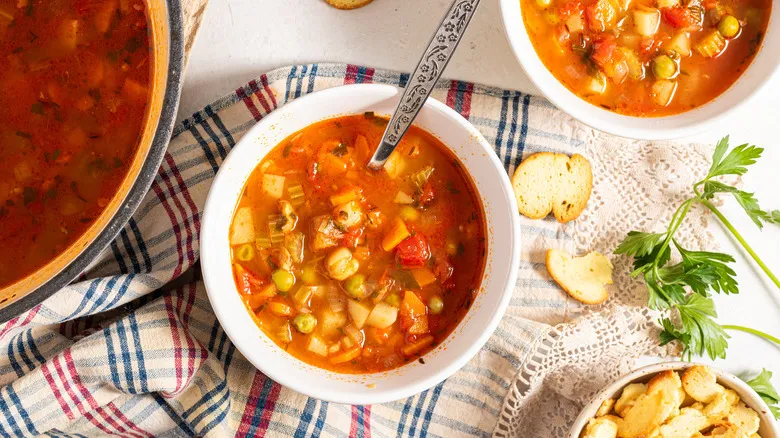Gather all the ingredients for this basic tomato and herb vegetable soup recipe
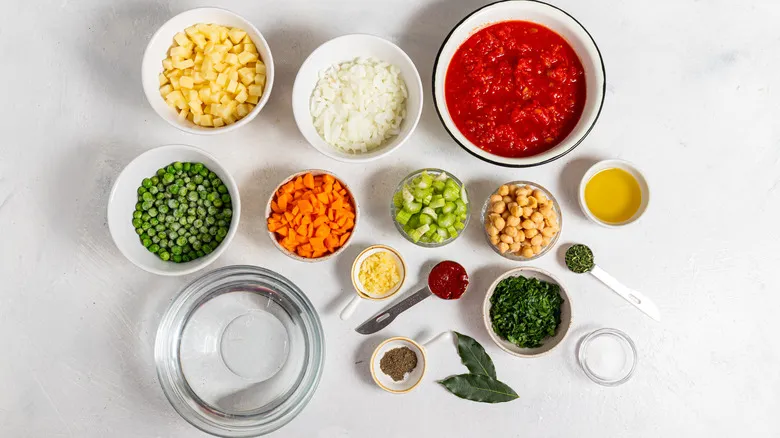
While it may appear that there are many ingredients, they are all straightforward and readily available, and you might even have some in your fridge or pantry already. If you happen to be missing one or two items, don’t let that deter you from preparing this soup, as its charm lies in its adaptability and versatility. Here’s what you’ll need for this tasty recipe: olive oil, yellow onion, garlic, chopped carrots, tomato paste, thyme, bay leaves, celery, potatoes, chickpeas, green peas, diced tomatoes, parsley, water or vegetable broth, salt, and black pepper.
Step 1: Cook the onion
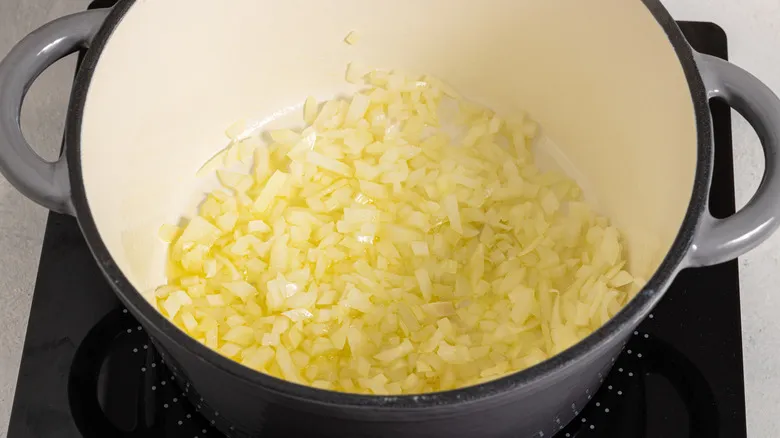
In a soup pot, warm the olive oil. Next, incorporate the diced onion and sauté over medium heat until it becomes tender, approximately 3-4 minutes.
Step 2: Add garlic
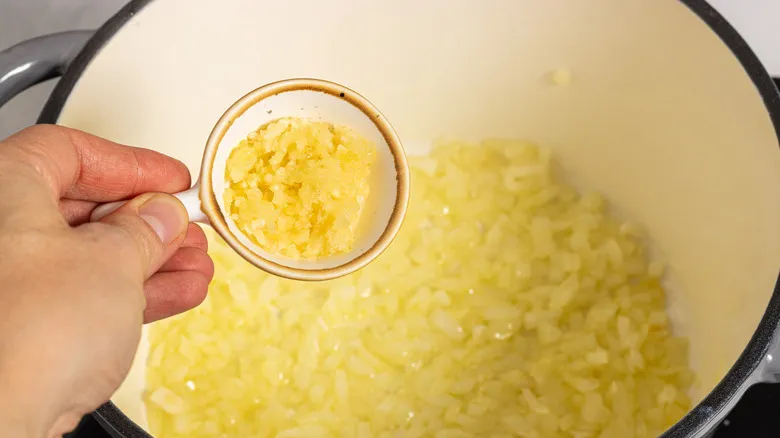
Incorporate the minced garlic and sauté for an additional minute.
Step 3: Add the carrots
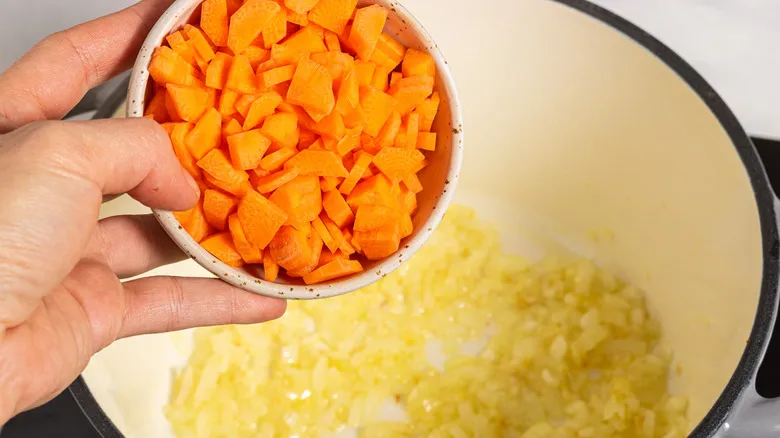
Stir in the chopped carrots and sauté for 2 minutes.
Step 4: Add tomato paste, salt, and black pepper
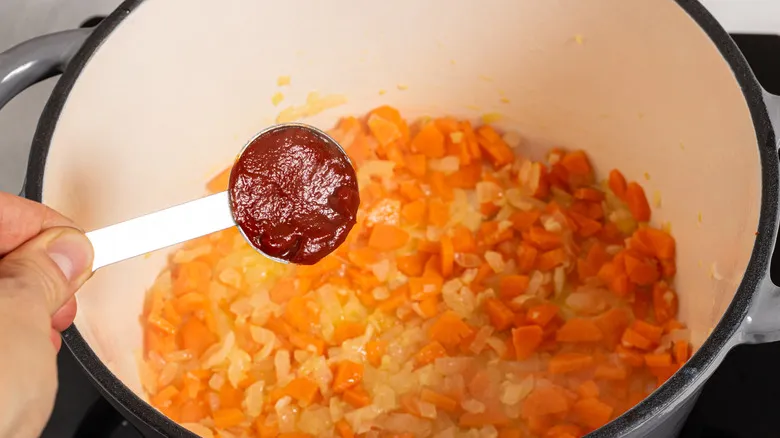
Incorporate tomato paste, salt, and black pepper. Mix well and cook for 30 seconds.
Step 5: Add the thyme, bay leaves, celery, potatoes, chickpeas, and green peas
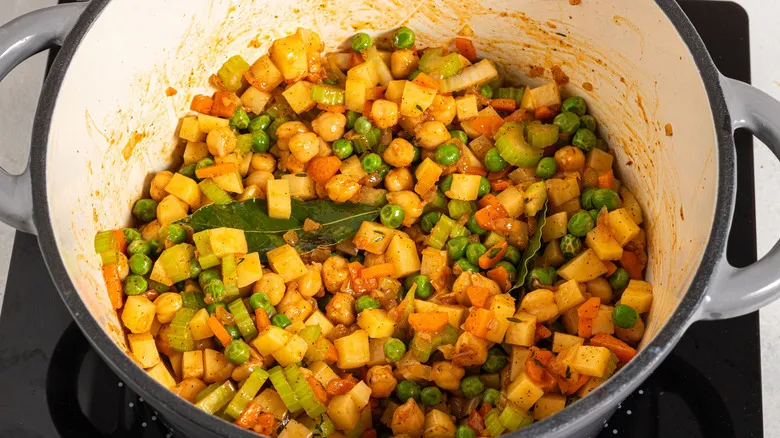
Incorporate the thyme, bay leaves, celery, potatoes, chickpeas, and green peas.
Step 6: Add the rest of the ingredients
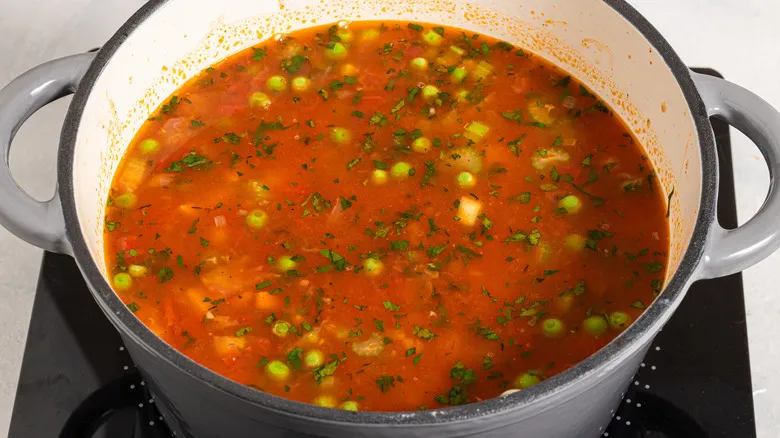
Stir in the chopped tomatoes and parsley, then pour in the water or vegetable broth.
Step 7: Cook until veggies are cooked
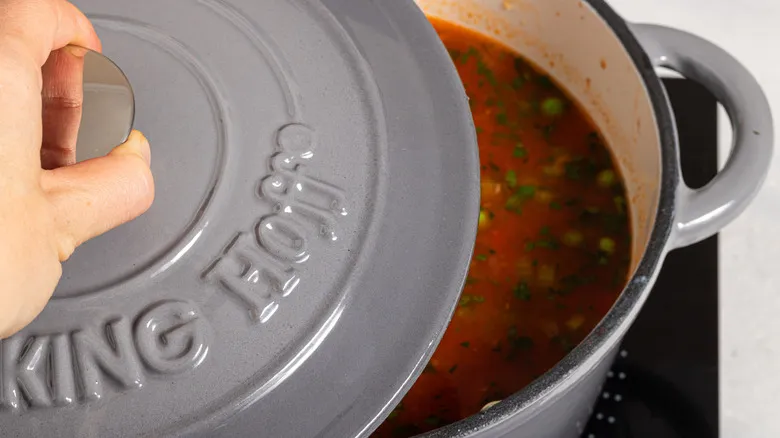
Place a lid on the pot and simmer for approximately 30-35 minutes, or until the vegetables are tender. Halfway through the cooking process, check to see if you’d like to add additional seasoning.
Step 8: Let the soup rest before serving
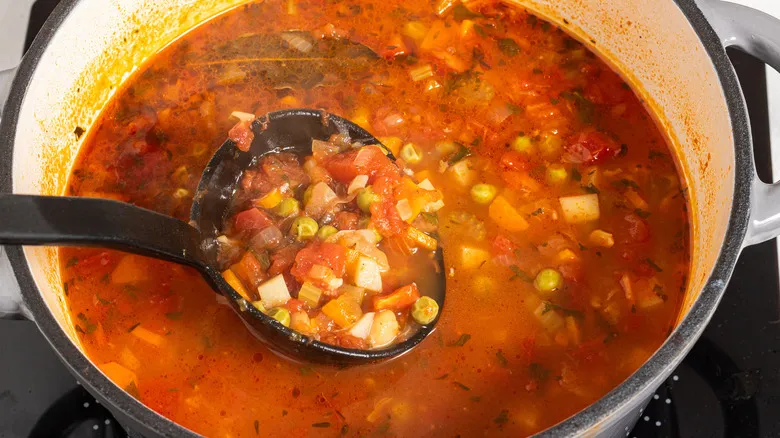
Take the pot off the stove and allow it to rest for a few minutes before serving.
How should you serve basic tomato and herb vegetable soup?
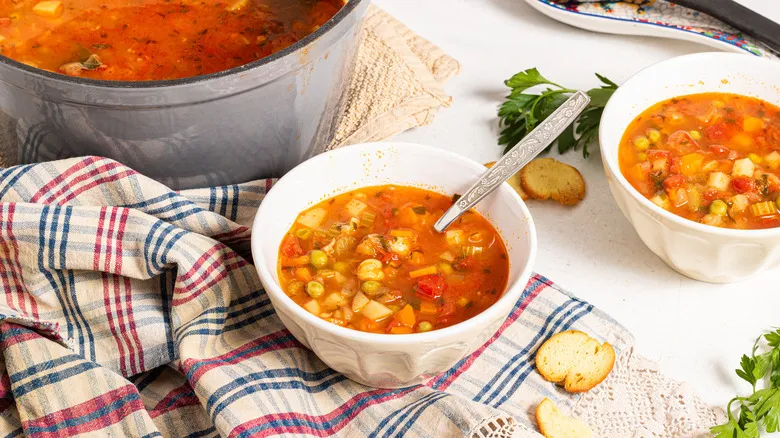
There’s something incredibly soothing about dipping a piece of crusty bread into a hot bowl of soup. Whether it’s a baguette, ciabatta, or a slice of artisanal bread, the pairing is simply unmatched. You can elevate your soup experience by serving it with a perfectly grilled cheese sandwich. The gooey, melted cheese beautifully complements the warmth of the soup. Whether homemade or store-bought, croutons provide a delightful crunch. Sprinkle them on top just before serving for added texture. A dash of Parmesan or crumbled feta can introduce a savory, salty kick to your tomato and herb vegetable soup, enhancing the flavors in a simple yet effective way.
Garnish the soup with a handful of fresh herbs like parsley, basil, or cilantro for a burst of freshness. This not only adds color but also brightens the overall flavor. A drizzle of high-quality extra virgin olive oil can enhance the soup's richness—a small addition that makes a significant impact. For a creamy finish, swirl in a dollop of Greek yogurt or sour cream, adding a luxurious texture and a hint of tang. If you enjoy a bit of heat, consider adding a splash of hot sauce or a spoonful of pesto for an extra flavor boost. Pair the soup with a light side salad for a balanced meal; a simple green salad with a lemon vinaigrette is a refreshing option.
How do you store basic tomato and herb vegetable soup?

Allow your soup to cool to room temperature. This step helps minimize condensation inside the storage container, which can create unwanted moisture and increase the risk of harmful bacteria growth. Use airtight containers or resealable plastic bags, ensuring they are suitable for freezing if you intend to store the soup in the freezer. If you prefer individual servings, consider dividing the soup into smaller containers or bags. This way, you can thaw and reheat only what you need without having to warm up the entire batch. If you plan to consume the soup within the next 3-4 days, keep it in the refrigerator.
For longer storage, pour the soup into freezer-safe containers, leaving some space at the top for expansion. Label each container with the date and place them in the freezer. When you're ready to enjoy the soup, move it to the fridge overnight for a slow thaw. Reheat it on the stove or in the microwave, stirring occasionally to achieve the desired consistency.
You can also prepare the soup in advance and savor it later, as the flavors may deepen as the ingredients meld over time. Follow your usual recipe, and once the soup is cooked, let it cool to room temperature. Then, transfer it into airtight containers or resealable bags based on your preference.
Can some of the ingredients be substituted in the basic tomato and herb vegetable soup?

The charm of this simple tomato and herb vegetable soup lies in its versatility. You can unleash your creativity by making substitutions based on your tastes or what you have available. Don’t hesitate to replace or add vegetables to suit your preferences. Ingredients like bell peppers, zucchini, spinach, or kale can introduce a fresh twist to the soup. It’s a great way to utilize whatever you have in your refrigerator. If you find yourself without thyme or bay leaves, there’s no need to worry. Rosemary, oregano, or basil can serve as excellent substitutes, providing a different herbal flavor.
Chickpeas and green peas are wonderful options, but you can easily swap in or add other beans such as cannellini, kidney, or lentils for extra protein and texture. Feel free to experiment with different types of potatoes; whether you choose russet, red, or sweet potatoes, each variety contributes its own distinct flavor and texture. You can also try using aromatics like leeks or shallots in place of onions, and consider adding a touch of ginger or chili for some heat.
Recommended

Colorful Salmon Avocado Poke Bowl Recipe

Chorizo And Beef Chili Con Carne Recipe

Thai-Inspired Coconut And Pumpkin Soup Recipe

The Melting Mistake That Ruins Nacho Cheese
Next up

